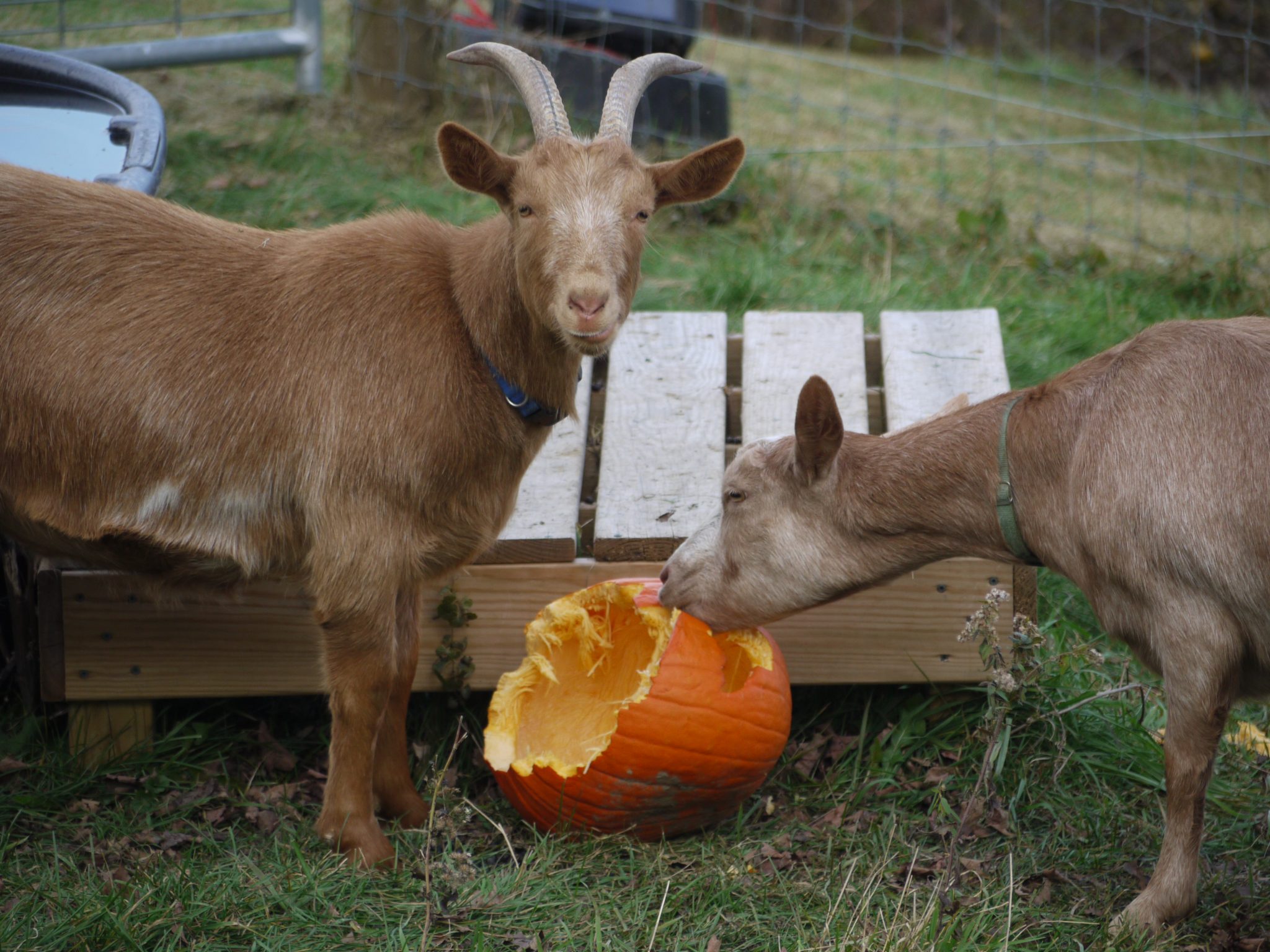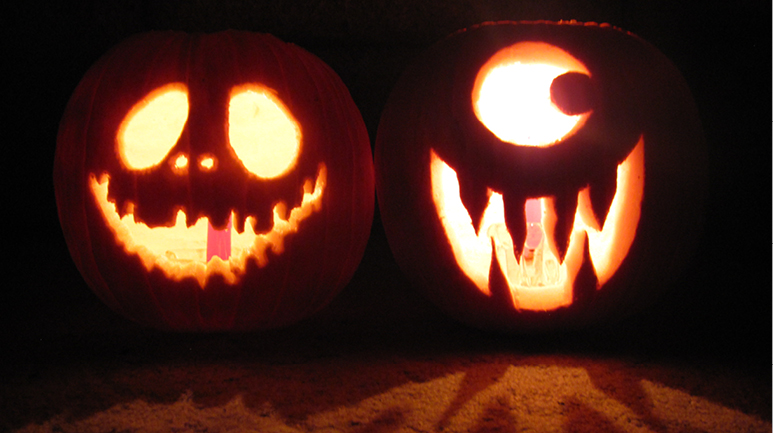Pumpkins painted and pumpkins carved: North America grows billions of pounds of pumpkins every year, and they’re a part of many of our hallowe’en celebrations! After Hallowe’en is over, however, what will you do with your pumpkin? We have at least 7 options for you that don’t include throwing it in the garbage!
Eating your Pumpkin
First, we need to note that carved pumpkins need to be kept at refrigerated temperatures and have only a flameless candle placed inside if you intend to cook them, which you should do within a few hours. Otherwise, you’ll have wax and smoke inside the pumpkin and all the carved surfaces will grow bacteria that render it unsafe to eat. You can also use nontoxic paints to decorate your pumpkin, or place it on your step intact and let its natural beauty be the decoration!
Second, it’s worth noting that carving pumpkins are edible but less tasty than the smaller “pie” pumpkins. You may prefer to use the flesh from a carving variety in baking, where the sugar counteracts the relatively more watery flesh.
Eat the seeds
- Roast them! Our favourite local home economist, Getty Stewart, has an easy guide to roasting pumpkin seeds
- Want to get at the green seeds inside? Here’s one method we found, and we’d love to know how it works for you!
Eat the flesh
- Too much work to eat it right away? Try freezing the pumpkin puree, which you can later use in pie, latte steamers, soup, bread, scones, or fruit leather! Plant the seeds to grow pumpkins next year: a fun experiment to do with kids! For now, save the seeds, then plant them in the spring.
- Why not make some dog biscuits, especially if you’re less certain about the food safety or tastiness of the pumpkin for human consumption? Here’s some recipes for pumpkin dog treats!Remember, please use your food safety senses on this one! If you’ve made sure to keep your pumpkin safe to eat, you can make something with it right away (here’s a link to some awesome pumpkin recipes)

dd
Donate your Pumpkin
Before hauling your pumpkin all over, make sure you check in with the person you’d like to donate to to make sure it’s needed! The great news is that pumpkins work well as animal feed, even if you’ve carved that jack o’ lantern and can’t safely eat it yourself. Farm animal sanctuaries and rescues often appreciate pumpkin donations. Please contact them before dropping off a pumpkin!
The Little Red Barn Micro Sanctuary is located in Charleswood and welcomes pumpkins. Rainbow Ranger Station welcomes pumpkins as well: you can drop them off under their sign at the end of the driveway. Kismet Creek states that donations of produce are often needed, but please contact them before coming out.
Other animal sanctuaries and rescues include The Good Place, The 10 Acre Woods, and Ledwich Family Farm.
If you or somebody you know raises livestock, feeding pumpkins to them is a great way to close the waste cycle!

DIY Spa Night
Front porch decoration to…spa night ingredient? Try these fun DIY ideas like pumpkin facials, pumpkin walnut body scrub, pumpkin spice hand lotion, pumpkin pie lip scrub, and more! With all the hand-washing we’ve been doing lately, these lotions and body butter recipes look especially appealing. Or maybe you want to try a body scrub with pumpkin and leftover coffee grounds – talk about zero waste! Either way, you’ll enjoy a well-deserved spa night and perhaps home will feel just a little more cozy (or hygge? Is it time for hygge yet?).

6
Compost your Pumpkin
A rind is a terrible thing to waste! Did you leave your pumpkin out to freeze and now it’s a sloppy rotting mess? Don’t have a car to bring it out to an animal sanctuary? Want lovely rich soil amendment for your garden next year? Compost that pumpkin!
If you live in Winnipeg, you can place your pumpkin in your leaf and yard waste bag for city collection and it will be composted at Brady Road Resource Management Facility. Or bring to Compost Winnipeg’s first Annual Pumpkin Drop on November 6! Or, you can compost it at home!
The key thing is not to throw your pumpkin in the compost bin whole. Not only does this take up a lot of space, it will take a very long time to break down, and may attract pests in the process (squirrels love taking bites out of pumpkins!). This late in the year, not much decomposition will happen before it freezes right up for winter, but if you add it correctly now, it’ll be ready to go in spring.
If you’ve already got a compost pile, it’s easy to compost your pumpkin. Just cut it down into smaller pieces (some people puree it, but that’s not necessary), add to your bin, and toss in a light layer of leaves on top to just cover the pumpkin pieces. This will help balance out the nutrients and keep pests away. Come spring, our friends the decomposing microorganisms will awaken and arrive, and get to munching! If you haven’t yet got a compost pile or bin, head here for our easy getting-started guide.
If you have an orphan pumpkin and no place to compost it, why not give it to a family member, friend, or neighbour who you know could use it. If no one you know wants it you might be able add it to a compost bin at one of the many community gardens around the city. Many of these gardens have composting facilities and would love to have your pumpkin. We’ve compiled a list of all the community composting sites that we are aware of.
Don’t forget to use the Compost InfoLine for any questions you may have about composting. You can reach us at compost@greenactioncentre.ca or 204-925-3777 ext. 106.




Recent Comments